Climate hero of the week
Climate hero of the week: The cancer patient who refuses to give up on our planet
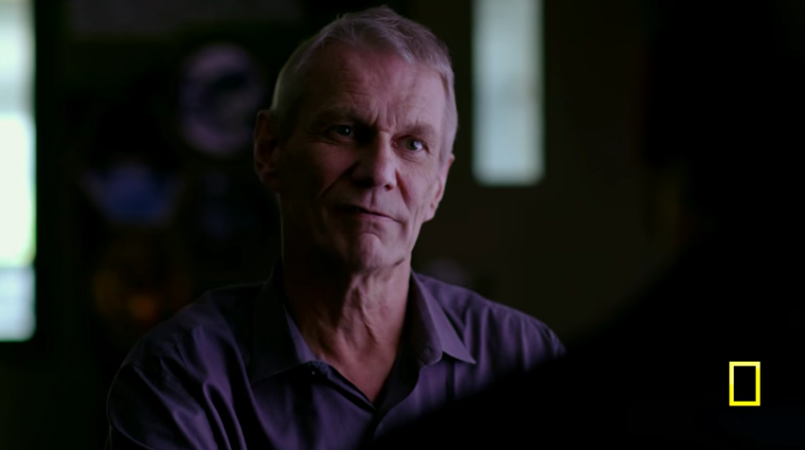
Image: YouTube/Before the Flood
Here at OutwardOn we are dedicated to honoring those who create innovative solutions to our world’s biggest climate problems. This week in Climate hero of the week we’re introducing Dr. Piers Sellers, who is an astronaut and the Director of the Earth Sciences Division at NASA/GSFC. He also appeared in the recent documentary Before the Flood, where actor Leonardo DiCaprio interviews scientists, activists and world leaders to discuss the dangers of climate change and possible solutions.
Toward the end of the film, DiCaprio talks with Sellers about his time in space and how his experience has changed his life. Sellers talks about seeing the earth’s atmosphere for the first time, and he describes the atmosphere as the “tiny little onion skin around the earth,” and “an astonishingly fragile film.”
Sellers understood the science of the atmosphere intellectually, but seeing the planet from space was a revelation. He could see big cities where people were working away, he could see hurricanes, and he saw the Amazon river run between his feet with massive green on either side. “Beautiful,” he describes it.
Last Christmas, Sellers was diagnosed with pancreatic cancer, stage 4—which means it had traveled beyond his pancreas. He was told he wouldn’t have much longer to live. Whereas this diagnosis would have most people quitting their jobs, Sellers was immediately thinking about what’s most important to do. He asked himself the question, “What can I contribute in the time I have left?”
Climate model simulation
He created a model simulation of the earth to see how global warming is affecting the planet as a whole in real time. Twenty satellites are dedicated to looking at the earth every day—one looks at clouds, one at sea surface temperature, one looks at CO2 in the atmosphere, and all of the data comes in and is used to create the climate model simulation.
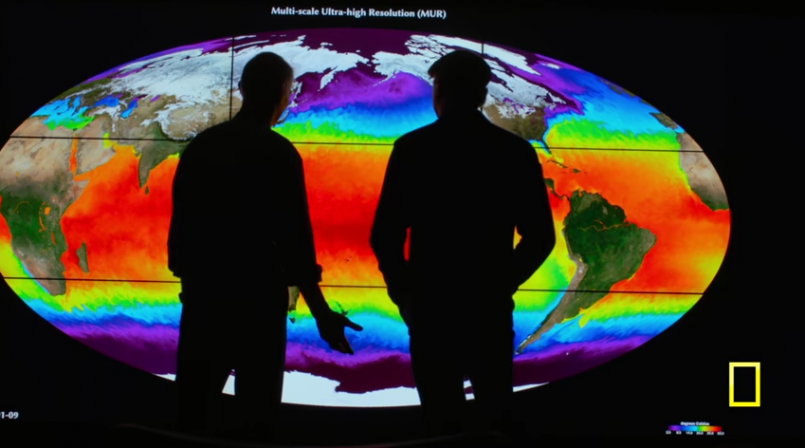
Image: YouTube/Before the Flood
The picture above is an example of a multi-scale ultra-high resolution (MUR), which gathers information on the ocean surface temperature as measured from space. Through this model simulation you can see the poles melting, which affects the motion of the gulf stream. The biggest impact will be on the gulf stream. As melting Greenland dumps more and more ice, the gulf stream conveyor belt will slow down and actually make Europe colder. The heat transplant from the tropics is what keeps Europe warm, but if that slows down Europe will get colder.
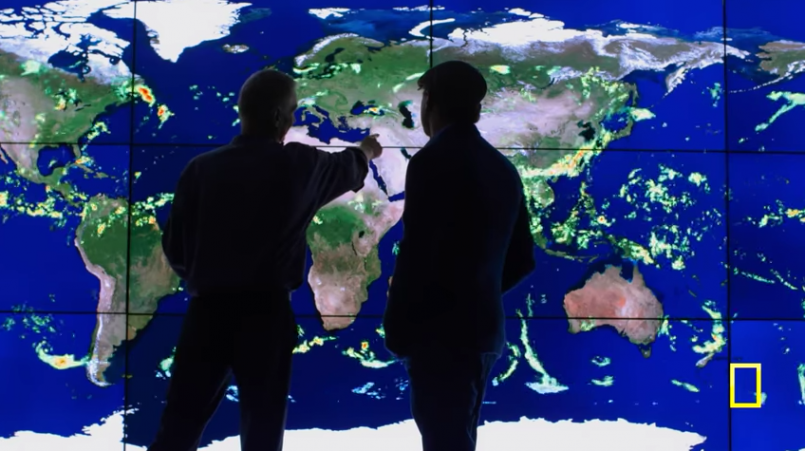
Image: YouTube/Before the Flood
This is a photo of the most advanced precipitation satellite in the world. Sellers believes the biggest impact from climate change is the moving of the precipitation belts. In the equator, they’re further out, but with warming temperatures, the belts are moving even more and causing more drought in places that are already too hot. Eventually droughts in bits of India, and the U.S. will get much worse, especially in Oklahoma and the Dust Bowl region. These places will get much, much dryer in the next few decades.
The climate model simulation is breathtakingly beautiful in a way—just the sheer force of nature. It’s really a work of art to see. But as DiCaprio accurately puts it, “It’s consistent not great news.”
Sellers explains that instead of just feeling hopeless, let’s say okay, here’s the problem, let’s be realistic and find a way out of it. “And there are ways out of it,” Sellers says.
“If we stopped burning fossil fuel right now, the planet would continue warming for a little while before cooling off again,” Sellers explains. In other words, once cooling started again, the Arctic ice sheet would begin to grow again.
“So there’s hope,” Sellers say finishing with a genuine smile.
“You seem to have a positive attitude, just about everything though. It’s amazing.” DiCaprio responded, clearly somewhat thrown off by Sellers’ positivity.
“I do. I’m basically an optimistic kind of person. I have faith in people.” Sellers continued, “I think once people come out of their fog of confusion on an issue or their uncertainty on an issue, they realistically appreciate it on some level, the threat, and then form what is the best action to deal with it. They gone on and did it. What seemed almost impossible to deal with became possible.” Smiling again, Sellers looks the camera in the eye with a fortitude that gives me chills to the bone.
A man near death, has done the unthinkable. He’s finding ways to improve our world when he likely won’t even be there to see the major consequences of global warming.
Before the Flood does have a way of making you want to throw your hands in the air and say whelp, we’re screwed! But Sellers’ fortitude, selflessness, and optimism will give you a deep breathe, a refresher, and definitely a reason to not give up on our planet.


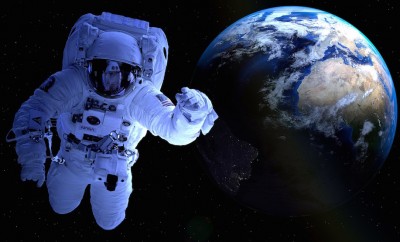
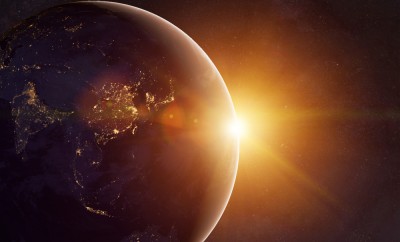

0 comments